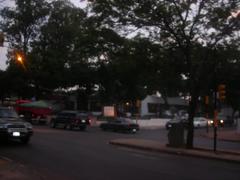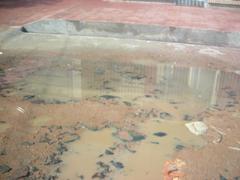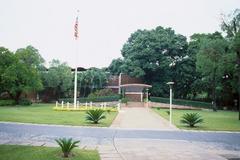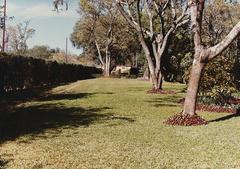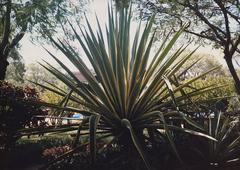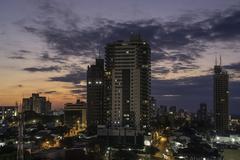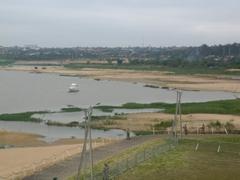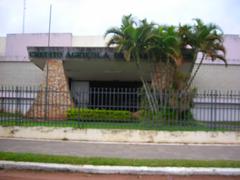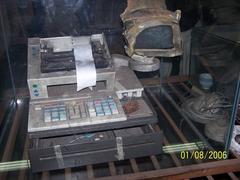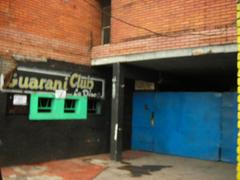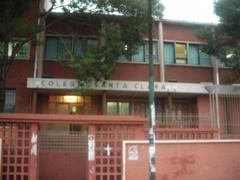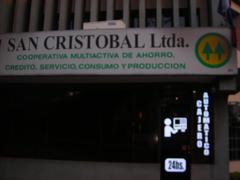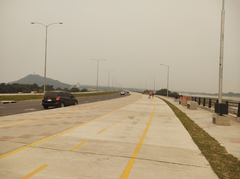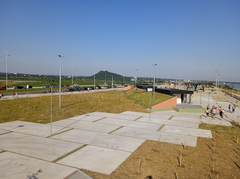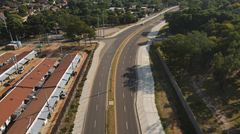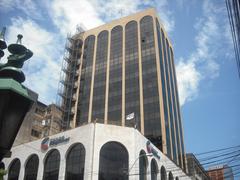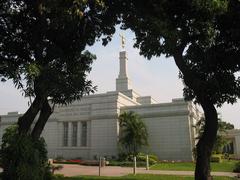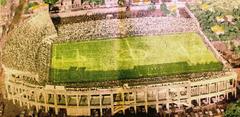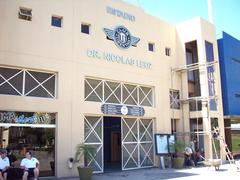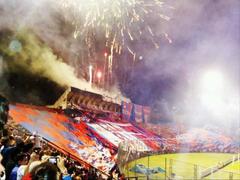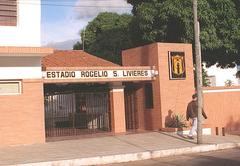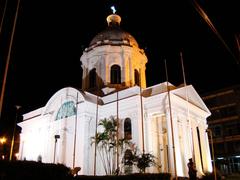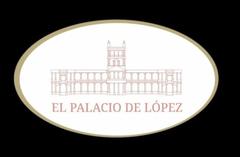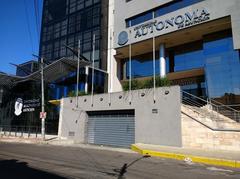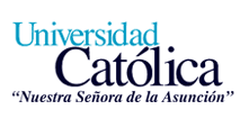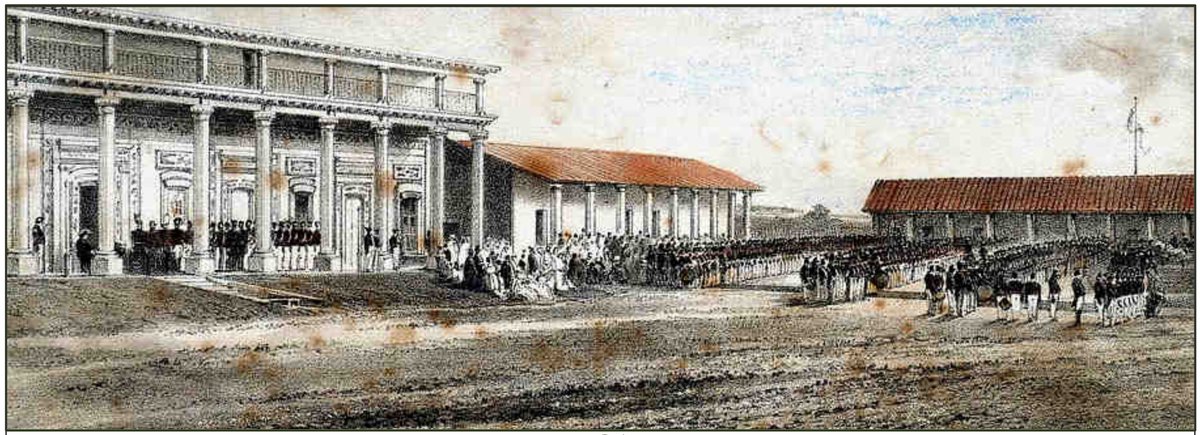
Visiting Asunción, Paraguay: Historical Sites, Tickets, Hours, and Tips
Date: 14/06/2025
Introduction
Asunción, the capital city of Paraguay, is a vibrant metropolis where colonial history, indigenous culture, and modern urban energy converge. Known as the “Mother of Cities” due to its pivotal role in founding several other major South American cities, Asunción offers an immersive journey through centuries of political, architectural, and social transformation. This comprehensive guide details the city’s most significant historical sites, practical visitor information including ticketing and accessibility, and essential travel tips to ensure a safe and enriching exploration of Paraguay’s historic heart.
Table of Contents
- Founding and Early Development
- Colonial Era: Cultural Confluence and Conflict
- Seeds of Independence and Early Republic
- 19th Century: Nation-Building and Turmoil
- 20th Century: Modernization and Memory
- Cultural Significance and Living Heritage
- Key Historical Sites: Visiting Hours & Tickets
- Travel Tips & Visitor Information
- Historic Landmarks and Monuments
- Museums and Cultural Institutions
- Neighborhoods, Markets, and Parks
- Entertainment, Nightlife, and Offbeat Activities
- Practical Tips for Visiting Asunción
- Entry Requirements and Arrival
- Getting Around
- Safety, Health, and Budgeting
- Accommodation & Packing
- Best Time to Visit
- Communication, Customs, and Food
- Shopping, Festivals, and Day Trips
- FAQs
- Conclusion & Recommendations
- References and Further Reading
Founding and Early Development
Founded on August 15, 1537, by Spanish explorers Juan de Salazar y Espinosa and Gonzalo de Mendoza, Asunción—officially “Nuestra Señora Santa María de la Asunción”—was established at a strategic point along the Paraguay River, on land originally inhabited by the Guaraní people. Its foundation coincided with the Feast of the Assumption, giving the city its name (Holidays Calendar; DayHist). Asunción’s location made it a vital colonial hub for Spanish expansion in the Río de la Plata basin and earned it the title “Mother of Cities” for founding Buenos Aires and Santa Cruz de la Sierra (National Today).
Colonial Era: Cultural Confluence and Conflict
During the colonial period, Asunción became a melting pot of Spanish, Guaraní, and African cultures. The First Synod of Asunción uniquely promoted evangelization in the Guaraní language, reflecting early recognition of indigenous identity (National Today). Architectural remnants from this era—such as colonial houses and the early city layout—are still visible in Asunción’s historic center, bearing witness to centuries of social and cultural exchange (Adventure Backpack).
Seeds of Independence and Early Republic
Asunción played a crucial role in Paraguay’s fight for independence. The 1731 rebellion led by José de Antequera y Castro, though ultimately suppressed, inspired the independence movement that culminated in 1811. The Casa de la Independencia, now a museum, served as the conspirators’ headquarters, preserving documents and artifacts from this pivotal period (Spark Nomad).
19th Century: Nation-Building and Turmoil
Under Dr. Gaspar Rodríguez de Francia, Asunción underwent early urban planning and isolationist policies. Later, President Carlos Antonio López initiated modernization efforts, including infrastructure projects like the horse-drawn tramway and construction of the Palacio de los López (Trip101). The devastating War of the Triple Alliance (1864–1870) resulted in occupation and a dramatic population decline. Post-war, immigrants from Italy, Germany, and Mennonite communities contributed to the city’s reconstruction and cultural diversity (Asunción Times).
20th Century: Modernization and Memory
The 20th century saw Asunción expand its educational, cultural, and public services. The National Pantheon of the Heroes, completed in the 1930s, commemorates the country’s leaders and war heroes (Adventure Backpack). Museums such as Museo de las Memorias and the Andrés Barbero Ethnographic Museum keep the memory of Paraguay’s turbulent past alive (Trip101).
Cultural Significance and Living Heritage
Today, Asunción’s historic center is characterized by colonial architecture, cobbled streets, and landmarks like the Casa de la Independencia and Palacio de los López (Adventure Backpack). The city hosts annual festivals such as Carnival and the Festival Internacional de Jazz, and its bustling markets like Mercado 4 offer an immersion into Paraguayan crafts and gastronomy. Guaraní culture remains vibrant in language, music, and daily life (Over Your Place).
Key Historical Sites: Visiting Hours & Tickets
Casa de la Independencia
- Hours: Tuesday–Sunday, 9:00 AM–5:00 PM
- Tickets: ~₲10,000 ($1.50 USD), free on national holidays
- Accessibility: Wheelchair accessible
- Highlights: Independence exhibits, period artifacts, guided tours
Palacio de los López
- Hours: Exterior viewable at all times; guided interior tours occasionally available by appointment
- Tickets: Free
- Accessibility: Historic structure, limited access
- Highlights: Presidential palace, neoclassical architecture, best viewed illuminated at night
National Pantheon of the Heroes
- Hours: Monday–Saturday, 8:00 AM–6:00 PM
- Tickets: Free
- Accessibility: Fully accessible
- Highlights: Mausoleum, national ceremonies, marble interiors
Museo del Barro
- Hours: Tuesday–Sunday, 9:00 AM–5:00 PM
- Tickets: ~₲15,000 ($2 USD)
- Accessibility: Wheelchair accessible
- Highlights: Indigenous, colonial, and contemporary art
Metropolitan Cathedral of Our Lady of the Assumption
- Hours: Daily, 7:00 AM–7:00 PM
- Tickets: Free
- Accessibility: Accessible
- Highlights: Neoclassical architecture, gilded altars, stained glass
Andrés Barbero Ethnographic Museum
- Hours: Tuesday–Sunday, 9:00 AM–4:00 PM
- Tickets: ~₲10,000 ($1.50 USD)
- Accessibility: Partial
- Highlights: Indigenous artifacts, ethnographic collections
Cerro Lambaré
- Hours: Daily, sunrise–sunset
- Tickets: Free
- Accessibility: Moderate, some challenging trails
- Highlights: Panoramic city views, pre-colonial significance
Travel Tips & Visitor Information
- Best Time to Visit: May–September (mild, dry weather)
- Transportation: Taxis, rideshares (Uber), and local buses serve most sites; city center is highly walkable
- Guided Tours: Recommended for deeper insight, especially for Palacio de los López and Casa de la Independencia
- Accessibility: Most museums accommodate mobility needs; check ahead for details
Historic Landmarks and Monuments
- Palacio de los López: View the illuminated façade at night. Gardens and exterior are wheelchair accessible (official tourism site).
- Casa de la Independencia: Guided tours recommended; plan one hour for a visit.
- National Pantheon of the Heroes: Attend during national holidays for special ceremonies.
- Metropolitan Cathedral: Modest dress required; open for daily visits and religious events.
Museums and Cultural Institutions
- Museo del Barro: Allow two hours for full experience.
- National Museum of Fine Arts: Free entry; extensive Paraguayan and international art.
- El Cabildo Cultural Center: Colonial building with rotating exhibitions and concerts.
- South American Football Museum: Free, Monday–Friday.
Neighborhoods, Markets, and Parks
- Loma San Jerónimo: Colorful houses, street art, rooftop bars.
- Historic Centre: Colonial plazas, government buildings.
- Mercado 4: Largest open-air market; ideal for souvenirs and local food.
- La Costanera: Riverside promenade for walking and boat cruises.
- Botanical Garden and Zoo: Green escape with native flora.
Entertainment, Nightlife, and Offbeat Activities
- Rooftop Bars: Popular spots include Britannia Pub and Casa Clari.
- Football Matches: Experience local sports culture at Estadio Defensores del Chaco.
- Boat Cruises: Sunset tours on the Paraguay River.
- Custom Tours: Arrange with local guides for tailored experiences.
Practical Tips for Visiting Asunción
- Language: Spanish and Guaraní; basic Spanish is very helpful.
- Currency: Paraguayan guaraní (PYG); cash is essential in markets.
- Transport: Silvio Pettirossi International Airport is the main gateway.
- Safety: Exercise standard precautions, avoid valuables in crowded areas.
- Dress Code: Lightweight, modest clothing, especially in religious sites.
Entry Requirements and Arrival
- Visas: Check latest requirements by nationality (TravelSafe-Abroad).
- Airport: Silvio Pettirossi International Airport (ASU), 10 km from city center. Taxis, Uber, and shuttles available (GoWorldTravel).
- Land Entry: Well-connected with Argentina and Brazil.
Getting Around
- Public Transport: Buses are affordable but crowded; use during daylight (TravelSafe-Abroad).
- Taxis/Rideshares: Reliable and recommended at night.
- Walking: Center is pedestrian-friendly; watch for traffic.
- Cycling: Possible but limited infrastructure.
Safety, Health, and Budgeting
- Crime: Petty theft common; secure valuables and stay alert, especially after dark (TravelSafe-Abroad).
- Health: Typhoid vaccination recommended; dengue risk present—use insect repellent (TravelSafe-Abroad).
- Water: Drink bottled or filtered water.
- Medical Care: Good in Asunción, limited elsewhere; have travel insurance.
- Costs: Asunción is budget-friendly. Example prices: bus fare ₲3,400–₲4,000, taxi within center ₲20,000–₲40,000, meal ₲30,000–₲60,000, hostel bed ₲50,000–₲80,000, hotel room ₲150,000–₲400,000.
Accommodation & Packing
- Areas: City center (Microcentro) for sightseeing; Las Mercedes and Villa Morra for upscale stays (GoWorldTravel).
- Packing: Lightweight clothes, sun protection, insect repellent, walking shoes, reusable water bottle, travel adapter (Anna Sherchand).
Best Time to Visit
- Climate: May–September is ideal; October–April is hot and humid, with frequent rain (TravelSafe-Abroad; Atlas & Boots).
Communication, Customs, and Food
- Language: Basic Spanish is useful; English not widely spoken. SIM cards are cheap and available at airport/shops (AsiaWorldTour).
- Customs: Handshakes or cheek kisses common. Tipping 10% in restaurants. Bring a small gift if invited home.
- Food: Try chipa guazú, sopa paraguaya, asado, and tereré (AsiaWorldTour). Stick to bottled water.
Shopping, Festivals, and Day Trips
- Shopping: Mercado 4 for souvenirs; look for ñandutí lace, ceramics, leather (TripSavvy).
- Festivals: Semana Santa, Festival de la Independencia, music and food events (Anna Sherchand).
- Day Trips: Areguá (artisanal town), Jakare Yrupe (lotus flowers), Jesuit Ruins via Encarnación (TravelSafe-Abroad).
FAQs
Q: What are the visiting hours for Casa de la Independencia?
A: Tuesday to Sunday, 9:00 AM–5:00 PM.
Q: Is Palacio de los López open to the public?
A: The exterior is viewable at any time; occasional guided tours by appointment.
Q: How accessible are Asunción’s historical sites?
A: Most are accessible or partially so; some historic buildings have limited access.
Q: Are guided tours available?
A: Yes, especially at Casa de la Independencia, National Pantheon, and with city tour operators.
Q: What is the best time to visit?
A: May–September for pleasant weather and festivals.
Q: How should I pay for tickets and small purchases?
A: Cash (PYG) is preferred; some larger venues accept cards.
Conclusion & Recommendations
Asunción’s historical sites vividly narrate Paraguay’s journey from colonial outpost to modern capital. Visitors can explore architectural gems, museums, and vibrant markets, while enjoying genuine hospitality and rich cultural traditions. By planning ahead, checking opening hours, and utilizing local resources such as the Audiala app, you can maximize your visit to this fascinating city.
Ready to explore? Download the Audiala app for real-time updates, guided tours, and exclusive travel content. Follow us on social media for insider tips and inspiration for your adventure in Asunción!
References and Further Reading
- Founding of Asunción, Holidays Calendar, 2024
- Founding of Asunción, DayHist, 2024
- Founding of Asunción in Paraguay, National Today, 2024
- Asunción Culture and Landmarks, Adventure Backpack, 2024
- Things to Do in Asunción, Trip101, 2024
- Cultural Events in Asunción, Asunción Times, 2024
- Exploring Paraguayan Heritage, Over Your Place, 2024
- Travel Safety and Visitor Information, TravelSafe-Abroad, 2024
- Asunción Travel Guide, GoWorldTravel, 2024
- Tips for Visiting Asunción, Atlas & Boots, 2024
- Irish Embassy Travel Advice, Ireland.ie, 2024
- Backpacking Paraguay, Anna Sherchand, 2024
- The Top Things to Do in Asunción, TripSavvy, 2024
- Exploring Asunción Landmarks, Adventure Backpack, 2024
- Asunción Events and Festivals, Adventure Backpack, 2024
- AsiaWorldTour: Asunción Paraguay

